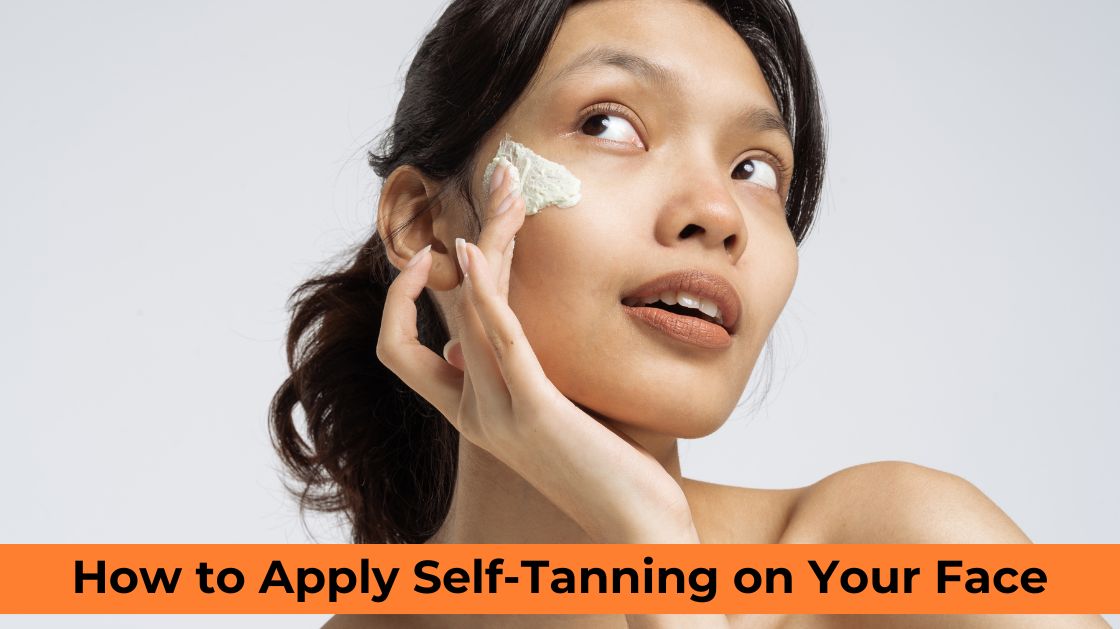Gone are the days when fair skin was the hallmark of beauty. Today, a healthy glow is in vogue! From the runways of Milan to influencers on social media, a sun-kissed complexion is a sign of vitality and confidence. For the skincare-obsessed individuals and young girls eager to step into the world of self-tanning, this guide is your golden ticket to knowing how to self-tan.
In the world of self-tanning, where knowledge is the key to a successful tan, we will unlock the secrets to a flawless, healthy glow. We’ll hold your hand through the process, from understanding the nitty-gritty of how to self-tan to dispelling myths that have held you back from taking the plunge.
Basics of How to Self-Tan
Self-tanning, or sunless tanning, is a process where a product is applied to the skin to make it appear darker. The active ingredient in most self-tanners is dihydroxyacetone (DHA), which interacts with amino acids in the skin to produce a temporary pigment called melanoidin, giving you the brown hue you desire without exposure to harmful UV rays.
The Benefits of Self-Tanning for Your Skin
Beyond the immediate visual appeal, self-tanning offers a few benefits for your skin:
- Even Out Skin Tone: Self-tanners can help mitigate the look of uneven pigmentation and redness, providing a more uniform skin tone.
- Reduce the Appearance of Blemishes and Varicose Veins: The darker skin can make blemishes and veins less noticeable.
- Self-tanners are a safer alternative to sun exposure, lessening the risk of sunburns, premature ageing, and skin cancers.
Top Tips for How to Self-Tan
A flawless tan is not just about the product but the process. Here are the top tips to ensure your self-tan looks its best.
Pre-Tan Prep
Preparing your canvas is crucial. Start by exfoliating your skin to remove dead skin cells. Focus on rough areas like elbows, knees, and ankles. Shave or wax at least 24 hours before tanning to avoid irritation and open pores.
During the Tan Application
Use a tanning applicator mitt for a smooth, streak-free application. Apply the self-tanner in circular motions, layering lightly. Pay special attention to blending at joints and where your skin naturally creases.
Post-Tan Care
After your tan develops, rinse off any guide colour in a lukewarm shower. Moisturize daily to extend the life of your tan, and use a gradual tanner to maintain the colour between self-tanning sessions.

Debunking Myths About Self-Tanning
Self-tanning has its share of misconceptions. Let’s set the record straight on some of the common myths:
Self-Tanning Products Will Turn Me Orange
Old-generation products might have given self-tanning a bad rep, but modern formulas are designed to provide a natural, olive-toned tan. The key is choosing the right product for your skin tone and type.
Self Tanning is Unsafe
The FDA has approved DHA for external application. It does not penetrate beyond the top layers of the skin, and there is no evidence that it leads to serious health risks.
Skincare Maintenance for Self-Tanned Skin
Self-tanning is not just about the tan; it’s also a skincare step. To ensure the best results, always:
- Hydrate your skin inside and out.
- Apply sunscreen daily to prevent fading and protect from UV damage.
- Use a non-abrasive cleanser to maintain your tan.
- Always patch-test new products to avoid allergic reactions or irritation.
Conclusion:
Self-tanning should be integrated into a comprehensive skincare regimen. It’s an extension of the self-care and wellness routines we adopt to feel good in our skin. Remember, your skin is unique, and so is the ritual you create around your self-tan. Be patient with the process, experiment with different products, and find what works best for you. With this guide on self-tan, you’re well on your way to glowing confidently all year round.













